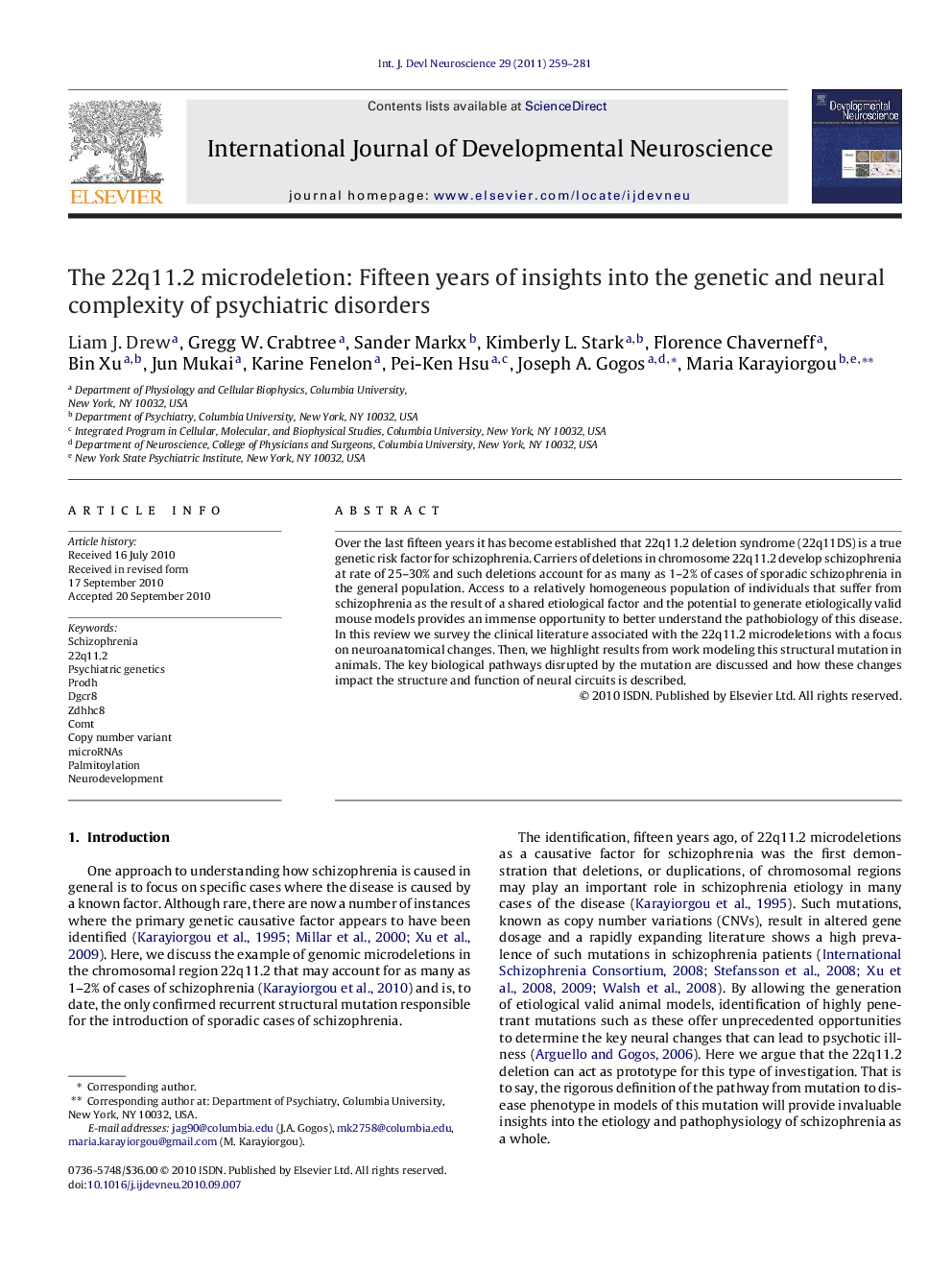| Article ID | Journal | Published Year | Pages | File Type |
|---|---|---|---|---|
| 2786624 | International Journal of Developmental Neuroscience | 2011 | 23 Pages |
Over the last fifteen years it has become established that 22q11.2 deletion syndrome (22q11DS) is a true genetic risk factor for schizophrenia. Carriers of deletions in chromosome 22q11.2 develop schizophrenia at rate of 25–30% and such deletions account for as many as 1–2% of cases of sporadic schizophrenia in the general population. Access to a relatively homogeneous population of individuals that suffer from schizophrenia as the result of a shared etiological factor and the potential to generate etiologically valid mouse models provides an immense opportunity to better understand the pathobiology of this disease. In this review we survey the clinical literature associated with the 22q11.2 microdeletions with a focus on neuroanatomical changes. Then, we highlight results from work modeling this structural mutation in animals. The key biological pathways disrupted by the mutation are discussed and how these changes impact the structure and function of neural circuits is described.
Research highlights▶ 22q11.2 deletions are the largest known genetic risk factor of schizophrenia. ▶ 22q11.2 deletions result in specific cognitive and neuroanatomical abnormalities. ▶ 22q11.2 deletions highlighted novel aspects of the genetics of schizophrenia. ▶ The imbalance of more than one deleted genes determines the overall phenotype. ▶ 22q11.2 mouse models have specific deficits in neural structure and physiology.
